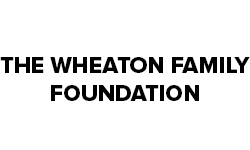GRADE 2 CITIZENSHIP STUDIES SELF, COMMUNITY, AND PLACE
Part A: Curricular Connections and Background
BROAD AREA OF CITIZENSHIP
Citizens with a Strong Sense of Self, Community, and Place explore the relationship that citizens have with themselves and others, their communities – local, regional, provincial, national, and global, and their developed sense of place. Being a member of any community brings with it certain rights; however, it also brings with it certain responsibilities to protect those rights and privileges. A person’s “sense of place” develops through experience and knowledge of the history, geography and geology of an area, the legends of a place, and a sense of the land and its history after living there for a time. Developing a sense of place helps students identify with their region and with each other. A strong sense of place can lead to more sensitive stewardship of our cultural history and natural environment.
In this area of study, students will examine the responsibilities that are inherent in all of these relationships. This area of citizenship invites students to act on issues that are explored so that they can move toward becoming justice-oriented citizens. Because this area of citizenship begins with self and exploring issues of citizenship it is the primary area of focus for primary and elementary students.
OVERVIEW AND DESIRED RESULTS OF CITIZENSHIP STUDY
Grade 2 students will continue to examine the relationship between needs, wants, and responsibilities. As students understand the reliance of humans on the community and the environment, and the responsibility to care for their surroundings and society they are developing the concept of community stewardship. Stewardship is supported through active participation in looking after the community. Ongoing examination of their relationships with their communities leads to further exploration of ways in which they can care for their environment.
Students continue to develop their skills of respect for themselves and others and understand that opinions are developed through personal experiences. They are developing skills of respect and find ways of dealing with differences of opinion.
Students begin to explore processes for initiating and guiding change in their community with respect to environmental, social, and economic issues. They learn how various community groups influence decisions.
Appreciation for national, provincial, and community symbols and traditions of citizenship are expanded.
ENDURING UNDERSTANDINGS OF CITIZENSHIP STUDY
Citizens with a strong sense of Self, Community, and Place treat self and others with respect, have a sense of belonging to their home, family, and school community, and interact with, learn from, and care for the local environment.
- Enduring understandings are the big ideas that stimulate thinking, guide the inquiry and are linked to outcomes.
- Essential questions point to the “big ideas’ in the inquiry and should be considered and reconsidered as the inquiry progresses.
- Answers to these questions form the evidence of learning at the end of study.
Students will use information to understand that:
- Actions, behaviours, and relationships are learned and affected by the past.
- Events and ideas from the past influence the present and can influence and serve as models of how to live as a contributing citizen.
- People develop rules so that we can live together peacefully.
- Rules have differing levels of impact so people who make rules need to consider the individual good and common good.
- Diversity can have a variety of impacts and can impact points of view
- Individuals have the power to affect others and make a difference.
- Canada has a long relationship with First Nations Peoples through treaty relationships.
- Decisions have far-reaching effects, so it is important to think about the choices we make.
- Active participation leads to belonging and symbols can support belonging;
- People are connected to each other and to their environment and have a responsibility to take care of the world.
KNOWLEDGE AND SKILL DEVELOPMENT
Students will:
- Discriminate between needs and wants
- Recognize Canadian symbols – provincial and national
- Become aware of their thinking and develop and practice skills of empathy, advocacy
- Develop and practice skills of treating self and others with respect
- Develop conflict resolution skills
- Begin to develop positive environmental habits.
ESSENTIAL QUESTIONS
- How do needs differ from wants?
- How can symbols provide a sense of belonging and unity?
- What responsibilities do I have to my community?
- What responsibilities do I have to my environment?
Essential Questions are open-ended questions that are continually revisited, encompass concepts that students will explore throughout the unit of study, form the evidence of understanding and frame the assessment at the end of the study.
CURRICULUM OUTCOMES AND INDICATORS
Outcomes: (Sask. Curriculum)
IN2.1
Determine the characteristics of the community.
Indicators:
- Identify and record characteristics common to the school community (e.g., Who leads the school community? Who keeps the school community clean and physically pleasant? What kinds of special events happen in the school community?).
- Compile a list of various communities to which students belong (e.g., cultural, recreational, faith, sports, arts).
- Compare characteristics of other communities to which students belong with those of the school community, identifying the similarities in meeting needs and achieving common purpose.
- Identify needs met by the local community that cannot be met independently or individually, and describe the concept of interdependence.
- Create an inventory of ways in which individuals and groups contribute to the well-being of the school and local community.
- Identify characteristics common to local communities (e.g., transportation and communication networks, educational and health care systems, culture, sport, and recreation infrastructure).
- Create a representation exemplifying interdependence within the local community.
RW2.1
Describe ways in which the local community meets needs and wants of its members.
Indicators:
- Define the term resource, and inventory resources in the community that help to meet needs and wants.
- Investigate how quality of life is influenced by individuals, businesses, and groups in the local community.
RW2.3
Contribute to initiating and guiding change in local and global communities regarding environmental, social, and economic sustainability.
Indicators:
- Represent through visual art, music, dance, writing, or other forms, the contribution of individuals and communities to initiate change that supports sustainability.
- Investigate how individual local consumer choices may affect people elsewhere in the world (e.g., child labour, enslavement, sweat shops, consumption of scarce resources, prosperity through employment).
- Develop a classroom action plan for harmonizing personal lifestyles with collective needs regarding social, environmental, and economic sustainability.
DR2.2
Analyze the influence of the natural environment on the local community.
Indicators:
- Describe natural features of the local community and speculate upon their importance (e.g., landforms, climate, vegetation, waterways).
- Compile examples of natural resources in the local community and explain the importance of conserving or restoring natural resources.
- Inventory ways in which the natural environment influences lifestyles of the local community.
- Identify ways that technology has been and is used to enable people to adapt to the natural environment (e.g., building technology, clothing, industrial equipment, personal care).
- Illustrate ways in which the natural landscape shapes daily life in the local community.
DR 2.4
Describe the influence of Treaty and First Nations people on the local community.
Indicators:
- Share stories of the heritage of the community.
- Investigate the relationship of traditional First Nations to the land.
- Identify on a map the Treaty territory within which the local community is situated.
- Describe the reasons for Treaty from the perspective of the First Nations and the government.
- Trace the evolution of the Treaty relationship in the community.
- Present oral, visual, or other interpretation or representation of historical understanding gained through oral history.
© 2024 Concentus Citizenship Education Foundation Inc. All Rights Reserved.









